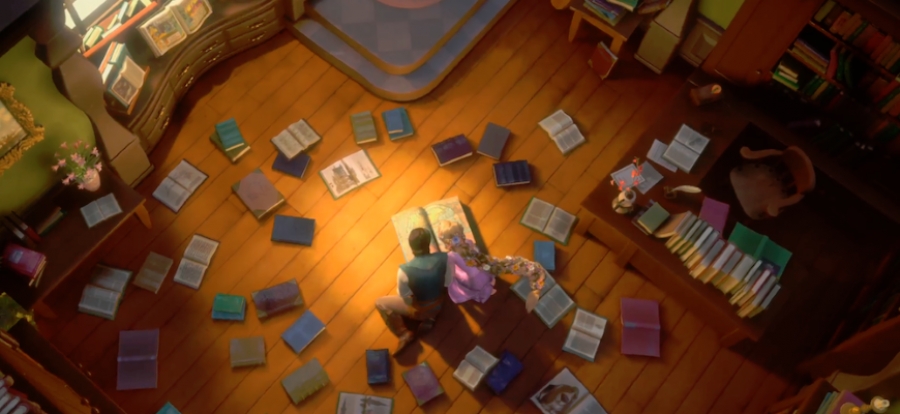
In one of my all-time favourite movies, probably because it’s set where I come from, I used the scene in Finding Nemo where Marlin reminds Nemo to brush up against the anemone as an example of mutualism. The clownfish are protected from other predators by the anemone, and the anemone is protected from its predators by the clownfish. This example may or may not have led to my rendition of Bruce and his “fish are friends, not food” speech…
The second learning moment / Disney reference was to do with the pyramid of numbers. We were discussing the need for there to be more producers than consumers in order for populations to flourish (eg enough grass to satisfy a number of rabbits, which in turn produce food for foxes - not enough grass means that foxes potentially die out if rabbits were their only food source). What better way to explain this than through The Lion King?

When Nala finds Simba living with Pumbaa and Timon, she explains that the lionesses have had to search further and further away from the pride land for food, as everything had been hunted and killed. The number of predators far outweighed the number of prey, leading to an imbalance in their ecosystem. I reinforced this with the scene where Mufasa teaches Simba about the circle of life - when the lions die, their bodies become the grass. The antelope eat the grass and the lions eat the antelope. We then linked it back to the predator-prey modelling we’d done in a previous lesson.

It’s not just in Science that I use these references. Disney films are fantastic for teaching literary techniques in English. This Buzzfeed article is a great list of techniques complete with Disneyfied explanations. I’ve previously used this as a basis for a display in a classroom. Difficult terminology becomes more accessible for students, and they also come up with their own examples to build on the display. It seems to be something that works for students in all years - even my Year 11 boys, though they’d never admit to it, get the references. Revisiting this article is making me want to redo the display - it’ll juxtapose nicely with my Avengers literacy posters!
In a small departure from my Disney obsession, I use Shrek frequently in English as well to teach building tension in a story.

Each time I’ve done this, virtually all of the students have seen the film, so we do a quick plot recap and then track the different things that happen on a tension graph. It also helps to demonstrate the parts of a story - orientation (Shrek in his swamp, bathing in mud and using his ear wax for candles), complication (the swamp being overrun with fairy tale creatures and the quest that Lord Farquaad sends them on), climax (mini climax when they defeat Dragon and rescue Fiona, and when Shrek, Donkey and Dragon stop the wedding) and resolution (true love’s kiss and happily ever after).
We seem to have discussions about the role of women quite frequently when studying texts. Lately it’s been Shakespeare (Juliet, Lady Macbeth, Miranda etc), but other texts including The Yellow Wallpaper and of course, Curley’s wife in Of Mice and Men. We talk about how things have changed, how they haven’t in certain cultures, and I always seem to be able to slip in that we wouldn’t have characters like Merida, Mulan, or even Rapunzel (who I am still reminded of every time I pick up a frying pan!) in our popular culture if the role of women remained as it was centuries ago.

Lastly, I seem to also be putting Disney references into behaviour management. When doing a little conflict resolution with two students, I couldn’t resist this one:

“Guys, we can keep going round and round in circles on this, or we can be mature about it and let it gooooooooooooooooooo!!!!” I need to teach them about my sense of humour, it transpires.
Lilo and Stitch is another behaviour management-Disney reference favourite. My headteacher constantly refers to our school as a family, and that’s something that filters through into classrooms. This one used to come up a lot when I taught 70+ students at once, and we had to teach them group work skills as well as whatever content we were on at the time:

Mixed ability groups - and even mixed ability classes - mean that some students need to recognise that the way they work, or the pace at which they work, isn’t always the same as for others. We need to remember to not ‘leave behind’ those who write slower, or think differently, or respond to tasks in different ways. Which, coincidentally, reminds me of this:

It might be time to retire some of the references, at least for a little while, and set myself a new challenge. Perhaps I should include some live action movies to balance things out a little? Either way, I’ll be carrying on using popular culture reference to explain concepts and topics. My students should...

Do you use Disney movies in your lessons? Let us know below!


















